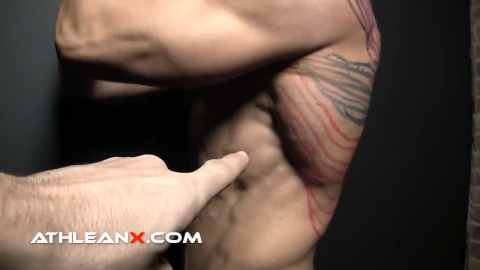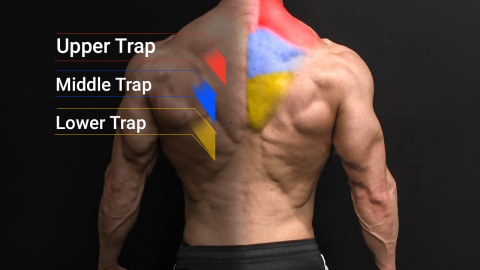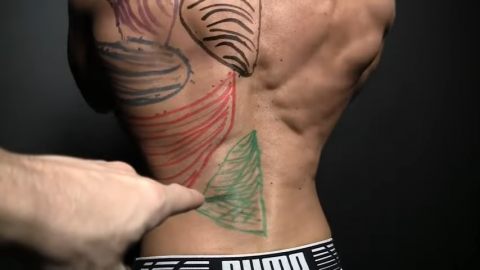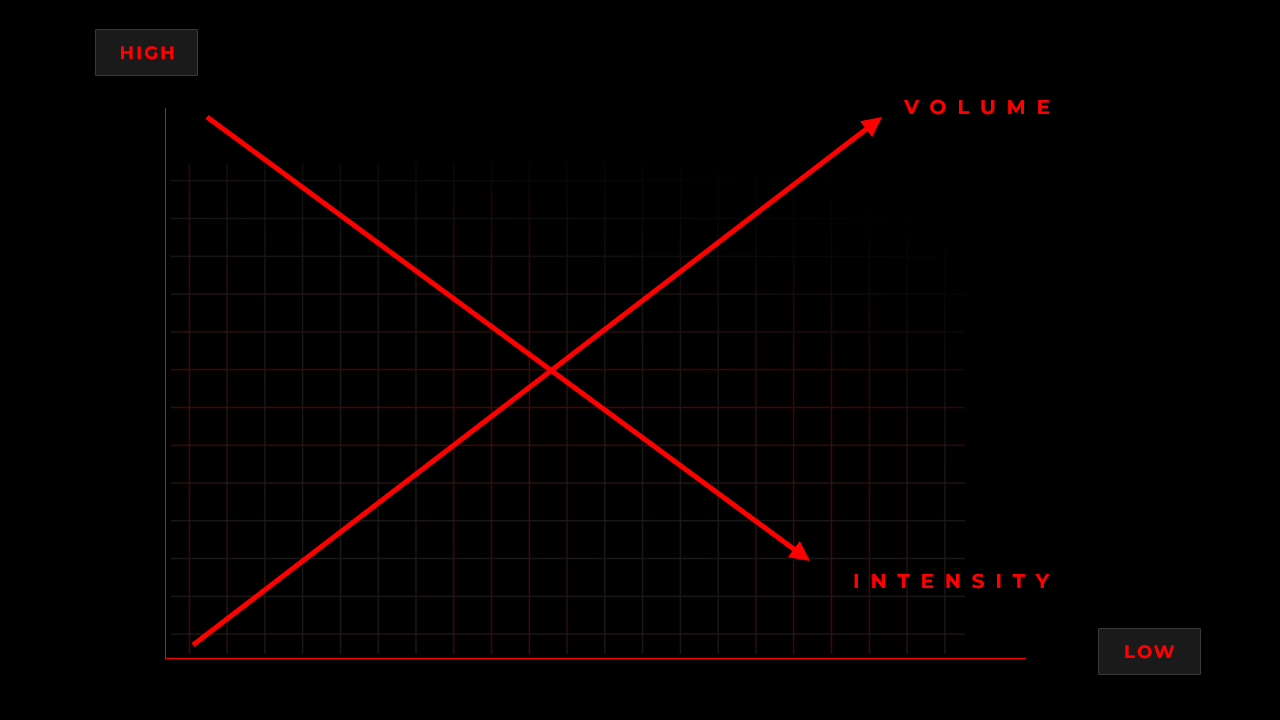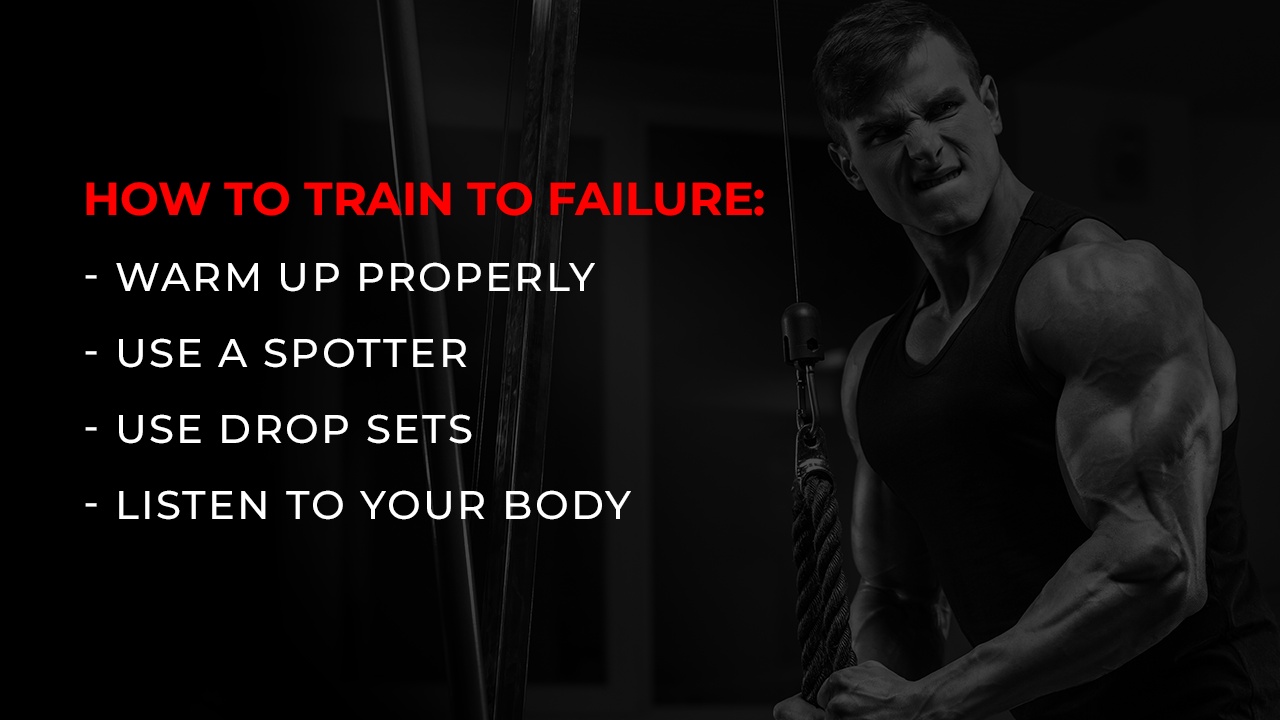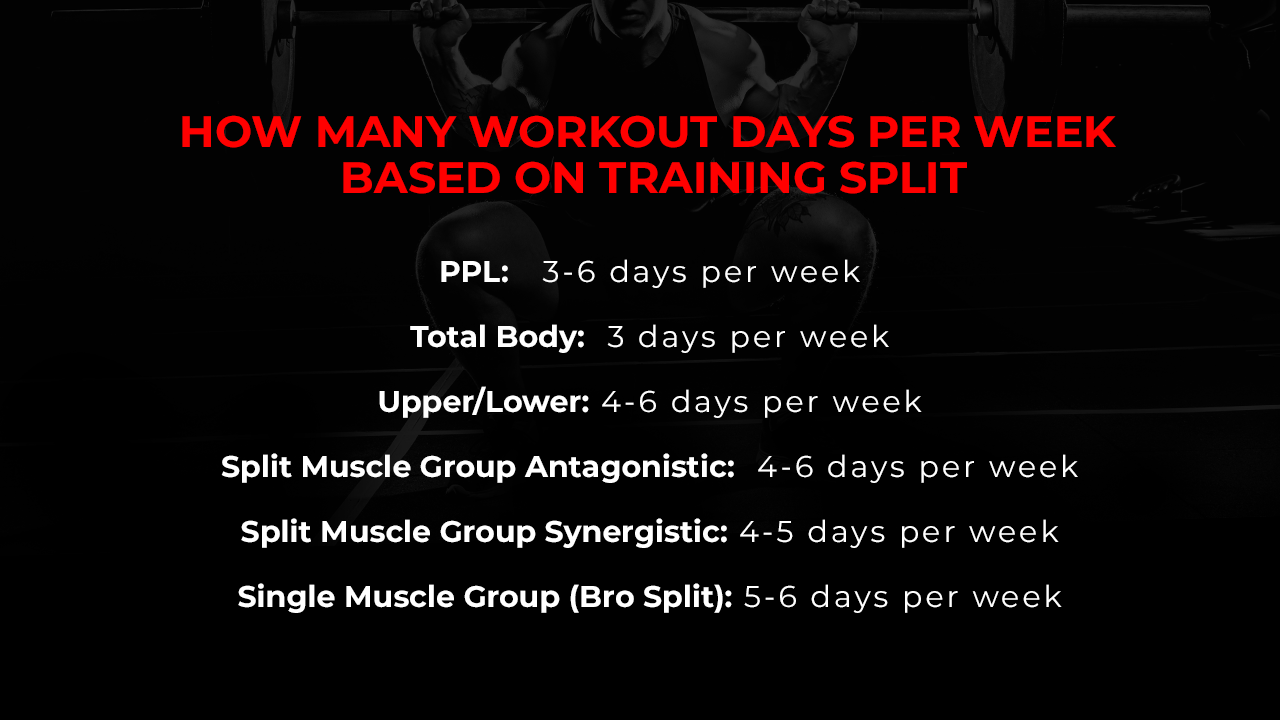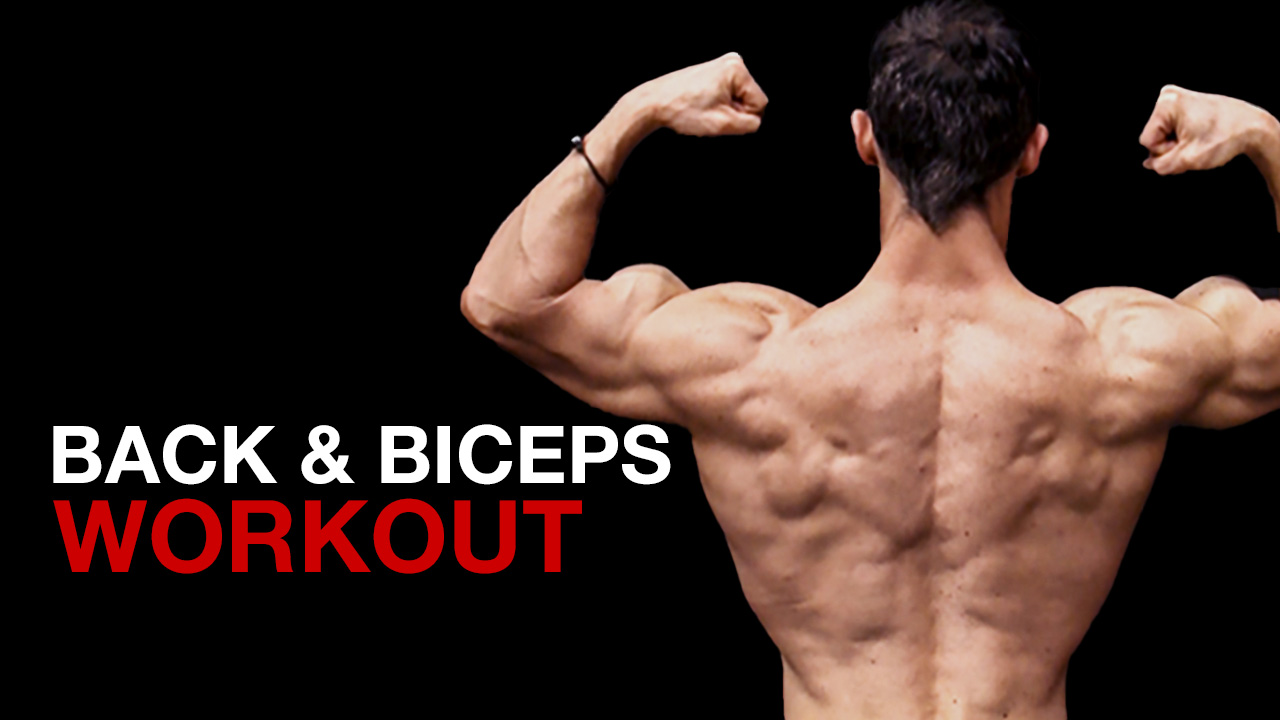
BACK AND BICEPS WORKOUT
Today, we’re going to cover a full back and biceps workout.
Right away, I know some of you are saying, “Jeff, are you really covering a Bro Split?”
Guys, a back and biceps workout routine is only a Bro Split if that’s all you’re doing.
A truly effective training split will make sure that certain complex muscle group combinations work synergistically.
This is one of those cases.
Let’s take a closer look at the anatomy of the back and biceps and how they work together.
I’ll also cover a back and biceps workout that you can start using right away.
Then we’ll wrap it up with some of the most commonly asked questions about back and bicep workouts.
ANATOMY OF THE BACK AND BICEPS MUSCLES
Before diving into the resistance exercises, let’s understand the intricate architecture of your back and biceps.
Understanding the target muscles isn’t just for the anatomy geeks. It’s crucial for optimizing each movement and maximizing muscular strength gains.
This is how you develop a strong mind-to-muscle connection.
The better that you can tap into the muscle fibers you’re working, the more intense the contraction.
This is how results happen.
Here’s a full breakdown of the back and biceps brachii muscle groups along with their functions.
LATISSIMUS DORSI
The latissimus dorsi muscles – better known as lats – are among the biggest muscles in your back, spanning a substantial portion of the lower and middle back.
These fan-shaped muscles originate from the lumbar and thoracic spine and insert onto the upper arm bone, the humerus.
When you see a well-defined back with that classic V-shape, you’re looking at well-developed lats.
The functions of the latissimus dorsi include the following:
- Shoulder Extension: When you move your arm backward, you’re activating your lats. For example, think about how your arm goes back during a Pull-Up.
- Shoulder Adduction: Moving your arm down towards the side of your body, like during a Lat Pulldown, gets the lats working.
- Internal Rotation of the Shoulder: When you rotate your arms towards the center of your body, the lats work to make this happen.
- Provides Stability: The lats play a crucial role in stabilizing the spine, especially during lifting tasks, making them vital not just for targeted back exercises but for full-body functional movements.
UPPER AND LOWER TRAPS
The trapezius muscle is a large, diamond-shaped muscle located among the middle and upper back muscles, extending to the back of the neck and down to the mid-spine.
It’s divided into three distinct regions: the upper traps, middle traps, and lower traps.
For our back and biceps training session, we’re going to focus on the upper and lower traps along with their functions.
The upper trapezius is situated at the base of the skull, spanning down the back of the neck and anchoring to the clavicle, or collar bone.
Its primary roles include facilitating the elevation of the scapula, which is the motion we recognize when we shrug our shoulders.
Additionally, it plays a key part in extending the neck, allowing us to tilt our heads backward or look upwards.
When lifting our arms above the head, it’s the upper trapezius that aids in the upward rotation of the scapula, ensuring smooth and coordinated movement.
The lower trapezius has its origins in the mid-section of the spine, specifically the thoracic area, and it stretches upward to connect with the scapula, or shoulder blade.
This muscle is instrumental in the depression of the scapula, which is the action of pulling the shoulder blades downward, counteracting the familiar shrugging motion.
It’s also responsible for scapular retraction, assisting in the act of drawing the shoulder blades closer together.
Moreover, when you lower your arm from a raised position, the lower trapezius plays a vital role in the downward rotation of the scapula, ensuring a controlled descent.
Some row variations that can target the middle of the back where the traps are include the T-Bar Row and the Chest-Supported Row.
LOW BACK / ERECTOR SPINAE
The erector spinae is a group of muscles and tendons running vertically along the entirety of the spine.
It is situated in the deep layer of the back muscles, which means it plays a huge role in postural stability.
While the erector spinae run from the base of the spine to the neck, the most important section is in the lumbar region or the low back.
The main functions of the erector spinae are:
- Spinal Extension: One of the main functions of the erector spinae is to straighten the spine and assist in returning it from a flexed (or bent forward) position.
- Lateral Flexion of the Spine: This refers to the movement of bending the spine to one side. The erector spinae on the opposite side of the bend actively work during this motion.
- Maintaining Upright Posture: The erector spinae muscles are constantly at work when you’re sitting or standing upright, as they prevent the spine from flexing forward due to the pull of gravity.
- Stabilization of the Spine: These muscles also help stabilize the spine during various movements and activities, providing a protective function and ensuring spinal health.
ROTATOR CUFF
The rotator cuff is not a single muscle. It’s actually a group of four smaller muscles and their connected tendons.
These muscles are the supraspinatus, infraspinatus, teres minor, and subscapularis.
Together, they cover the head of the humerus (the bone of the upper arm) and connect it to the shoulder blade (scapula).
Forming a cuff-like structure, the rotator cuff ensures a smooth and stable functioning of one of the most versatile joints in the human body: the shoulder joint.
Their primary responsibility is to anchor the humerus securely within the shallow socket of the scapula, ensuring the shoulder remains stable despite its vast range of motion.
Notably, the supraspinatus plays a pivotal role in the early stages of lifting the arm away from the body, while the combined efforts of the infraspinatus and teres minor enable the arm’s outward rotation.
The subscapularis muscle facilitates the arm’s inward rotation.
Additionally, as one raises their arm, the rotator cuff ensures that the humeral head remains suppressed, avoiding any potential for pinching against the shoulder blade.
TERES MAJOR
The teres major is a rounded muscle located in the upper arm and shoulder region, lying just beneath the teres minor (a rotator cuff muscle).
It starts from the bottom part of the shoulder blade and attaches to the top part of the humerus (upper arm bone).
While it’s not a part of the rotator cuff muscles, the teres major works in tandem with them, especially in movements requiring shoulder stability and strength.
The main functions of the teres major are:
- Shoulder Adduction: The teres major helps to move the arm towards the body’s midline, pulling it downward after being raised.
- Internal Rotation of the Shoulder: The muscle assists in turning the arm inward, or medially.
- Shoulder Extension: The teres major also helps in moving the arm backward, especially from a flexed position to behind the body.
BICEPS SHORT HEAD

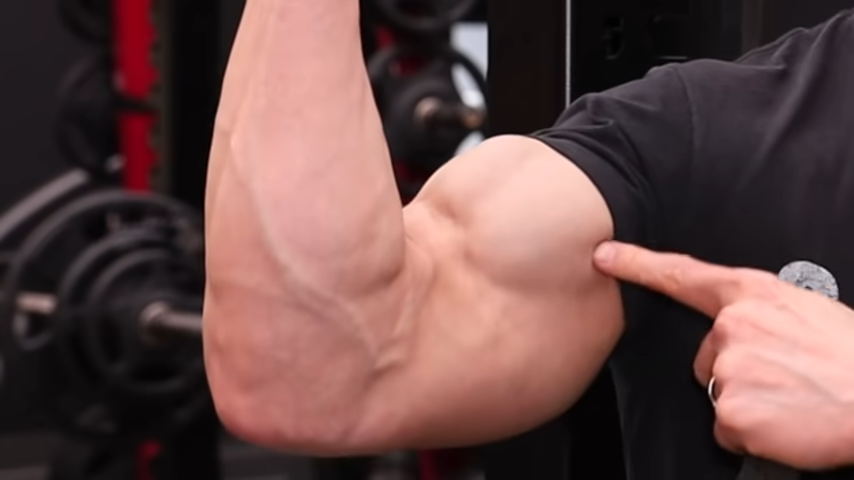
The biceps brachii muscle fibers consist of two distinct muscle bellies: the long head and the short head.
These two make up what’s regarded as the trophy muscle of the arms.
The short head of the biceps brachii is the one closer to the inside of the body and it starts from a bony bump on the shoulder blade.
Like the long head, its primary role is to help in bending the elbow, which lets you bring your forearm closer to your upper arm.
It also helps in turning the forearm to a palm-up position. This movement is called supination.
Although it’s not its main function, the short head also helps in lifting the arm forward or what’s referred to as flexing the shoulder.
BICEPS LONG HEAD

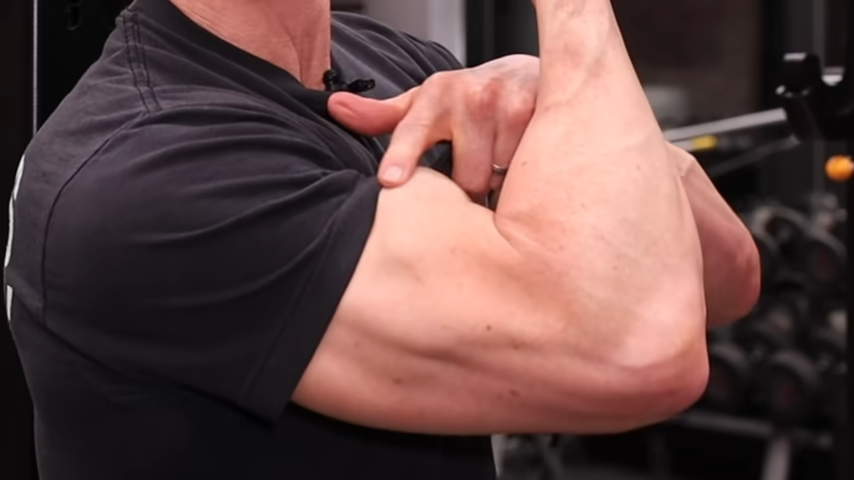
The long head of the biceps stands out as the more lateral of the two, originating from the supraglenoid tubercle of the scapula and running over the shoulder joint in its distinct bicipital groove.
Direct biceps training will target both heads of the biceps muscle with a variety of basic bicep exercises such as Preacher Curls, Bar Curls, and Cable Machine Curls, just to name a few options not mentioned below.
The main functions of the biceps are:
- Elbow Flexion: The long head contributes significantly to bending the elbow, drawing the forearm toward the upper arm.
- Supination of the Forearm: This action involves rotating the forearm into a palm-up position, and the long head plays an active role in facilitating this movement.
- Shoulder Flexion: The long head assists in elevating the arm forward, contributing to the overall motion of flexing the shoulder.
- Shoulder Joint Stability: It also offers stability to the head of the humerus, ensuring it remains seated within the shoulder socket, especially during overhead movements.
BRACHIALIS


Though the brachialis isn’t traditionally categorized as a bicep muscle, targeting it is crucial for those seeking bigger biceps.
Nestled underneath the biceps brachii, the brachialis is a muscle that stretches from the lower part of the upper arm to the elbow. Its positioning between the biceps and the triceps gives it a pivotal role in the overall contour of the arm.
The brachialis has some key roles when it comes to arm movement. It is a major muscle responsible for bending the elbow and is even more specialized in this action than the biceps.
This means that whenever you bend your arm, the brachialis is actively involved, no matter how your hand or forearm is positioned.
It also helps to stabilize the elbow joint during various forearm activities, ensuring movements are smooth and coordinated.
FOREARMS
The forearm muscles, while not the central focus of this high-intensity, challenging workout, will undoubtedly be engaged during exercises such as the Hammer Curl.
When it comes to arm development, biceps and triceps often steal the spotlight.
However, the forearms, those intricate bundles of muscle stretching from the elbow to the wrist, take the brunt during day-to-day movements and strenuous exercises.
The main functions of the forearm muscles are:
- Grip Strength: Whether you’re doing heavy lifting or light weights, carrying groceries, or simply shaking someone’s hand, your grip strength is predominantly determined by your forearm muscles.
- Wrist Movement: Every time you type, write, or wave, you’re using your forearm muscles to move your wrists.
- Finger Dexterity: Fine motor skills, like buttoning a shirt or playing a musical instrument, owe a lot to the nuanced movements controlled by the forearms.
The Barbell Wrist Curl is a classic forearm muscles exercise.
BACK AND BICEPS WORKOUT
Now that you know which major muscles we’re targeting, we can jump into the entire workout.
You can add this back and biceps workout to your current training program assuming you’re giving equal attention to the other muscle groups.
If you’re happy with your routine, consider using this to try something new for a month before going back to your original workout.
Whether you’re doing a Push-Pull workout split, a PPL, or a total body workout split for muscle gain, be sure to focus on the pairing of muscles that work together synergistically.
Also, I want you to forget about ego lifting here. Instead, focus on training intensity. That might mean you need to use a lighter weight, different curl variations, etc.
That’s okay! Focus on moving through each exercise, moving the bar with control. You’ll work your way up in weight in time.
With that said, here are my upper body exercises for this back and biceps workout session.
SINGLE ARM DUMBBELL ROW

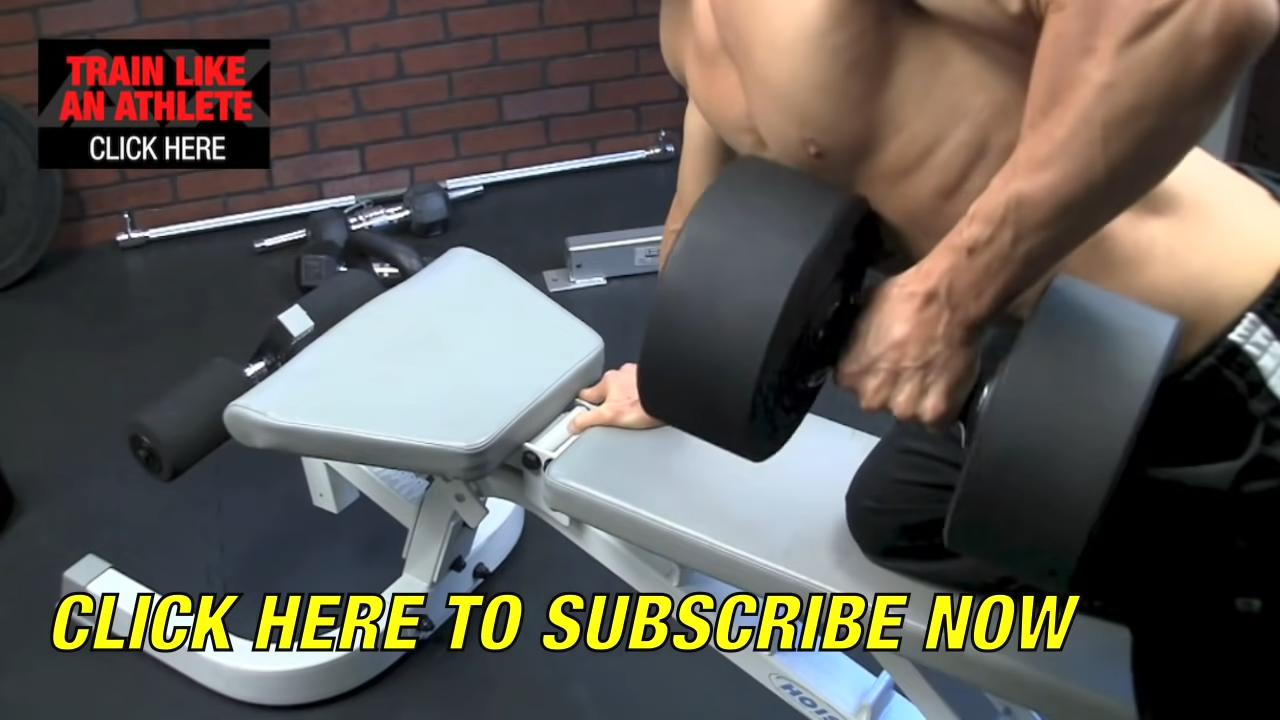
HOW TO DO THE SINGLE ARM DUMBBELL ROW:
- Select a lighter weight dumbbell. Eventually work up to a challenging weight. Position yourself beside a weight bench or a long stable surface, adopting a hinged stance. Stand with your feet spread shoulder-width apart.
- Rest your left hand on the top of the bench and position your left knee near the bottom. Ensure your stance is extended so your right foot doesn’t block the dumbbell’s path during the lift.
- Grasp the dumbbell with a neutral grip (palm facing inwards) letting it dangle below your shoulder. With proper form, activate your core, tilt your chest upwards and elevate your hips, ensuring your back remains neutral.
- Initiate the row by pulling the dumbbell upwards, with your elbow leading and extending past your upper torso, targeting the lats.
- At the peak, contract the lats, then gradually revert to the initial position, emphasizing arm extension to optimize time under tension.
- If you don’t have access to a pair of dumbbells, a great alternative exercise would be the Resistance Band Row.
WHAT MAKES IT EFFECTIVE: The Single Dumbbell Row exercise ensures that you get even muscle contraction in both sides of your back, helping prevent uneven muscle strength. Plus, if you engage your core correctly during this challenging exercise, you not only protect your spine but also strengthen your core muscles. The same technique pointers can be used for other exercise variations, such as the Bent-Over Barbell Row.
WEIGHTED PULL-UPS


HOW TO DO THE WEIGHTED PULLUP:
- To begin, you’ll use a weight belt with plates, a weighted vest, or even a dumbbell clenched between your feet. Start by positioning yourself beneath the pull-up bar and gripping it just beyond shoulder-width, with your palms facing forward in an overhand grip.
- Before initiating the movement, activate your core to offer stability and stop unwanted swinging.
- As you inhale, engage in the pull-up using scapular retraction and direct your elbows downward and to your sides, keeping the core tight.
- Aim to lift until your chin surpasses the bar’s level, all the while maintaining a straight body posture without relying on momentum.
- During the descent, emphasize muscle control, gradually returning to the starting position with arms fully extended.
- Alternative back exercises for beginners would mainly focus on removing the added weight and mastering a clean form with body weight first. In other words, if you have to choose between heavy pull-ups or 50 pull-ups as a beginner, I’d say go with the latter and then switch over to the heavy weight.
WHAT MAKES IT EFFECTIVE: Weighted Pull-Ups are a fantastic lat exercise, highly effective for targeting the back muscles primarily because they are a type of compound movements. This ensures that multiple muscle groups in the back are worked simultaneously. Moreover, the added weight intensifies muscle activation, leading to greater muscle growth and functional strength.
BENT-OVER BARBELL ROWS

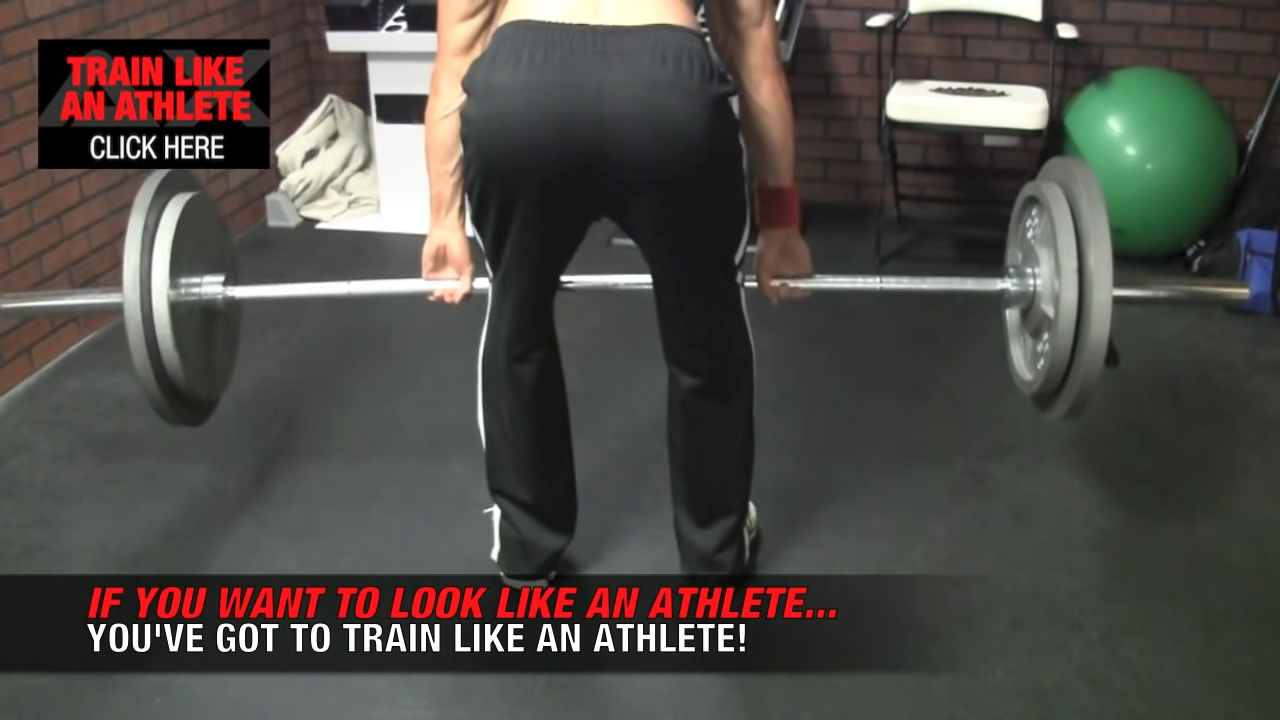
HOW TO DO BENT OVER BARBELL ROWS:
- For this compound exercise, position yourself with feet shoulder-width apart, grasping a barbell with a pronated grip with hands outside shoulder width.
- From a standing position, hinge forward from the hips while slightly bending the knees, ensuring your back remains straight and nearly parallel to the floor. Let the barbell hang naturally in front with arms outstretched.
- As you initiate the row, breathe in, and draw your elbows upwards and slightly backward, keeping them snug to your sides. Visualize squeezing your shoulder blades together as the barbell approaches your lower rib cage.
- It’s crucial to maintain a stable torso throughout, resisting the urge to generate momentum by rocking.
- After a brief pause at the peak of the row, exhale and gradually lower the bar with control to the starting position.
- While it might be possible to lift heavier loads, I’d recommend a few warm-up sets with lighter weights before progressing to heavy loads.
WHAT MAKES IT EFFECTIVE: The Bent-Over Rows stance not only emphasizes the target back muscles but also requires significant core engagement. This dual action during the Barbell Row not only strengthens the back but also fortifies the core, promoting overall stability and functional strength. Overall, bent-over rows are an amazing exercise for back and biceps.
WEIGHTED SINGLE-ARM ROWS WITH EXTENSION

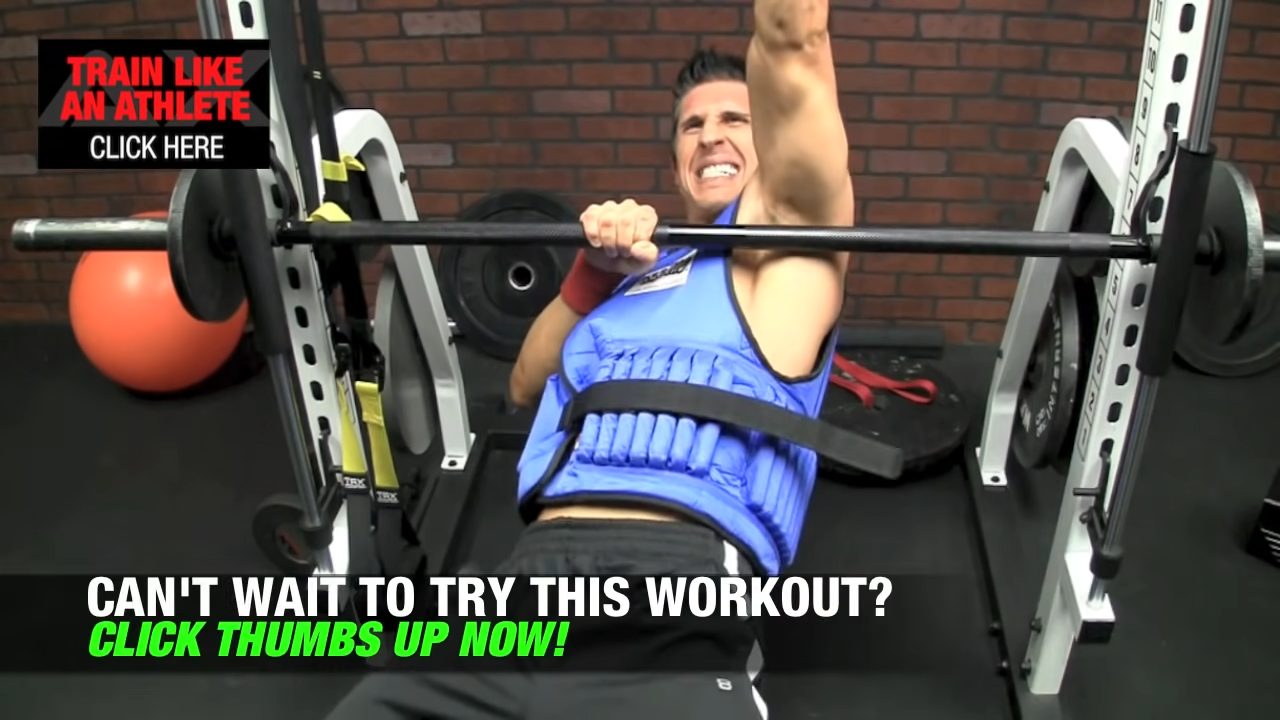
HOW TO DO WEIGHTED SINGLE ARM ROWS WITH EXTENSION:
- Set up a Smith machine so that you can lie down beneath it and reach up comfortably. Wear a weighted vest for additional weight.
- Extend your right arm above, grabbing the bar with an overhand grip.
- Contracting the back muscles, bring yourself up and reach above with your left arm.
- With complete control, slowly lower yourself back to the starting position.
- Repeat on the other side and keep your form strict throughout.
WHAT MAKES IT EFFECTIVE: This unilateral exercise is excellent for ensuring that both sides of the body are getting an equally effective workout.
BARBELL CURLS

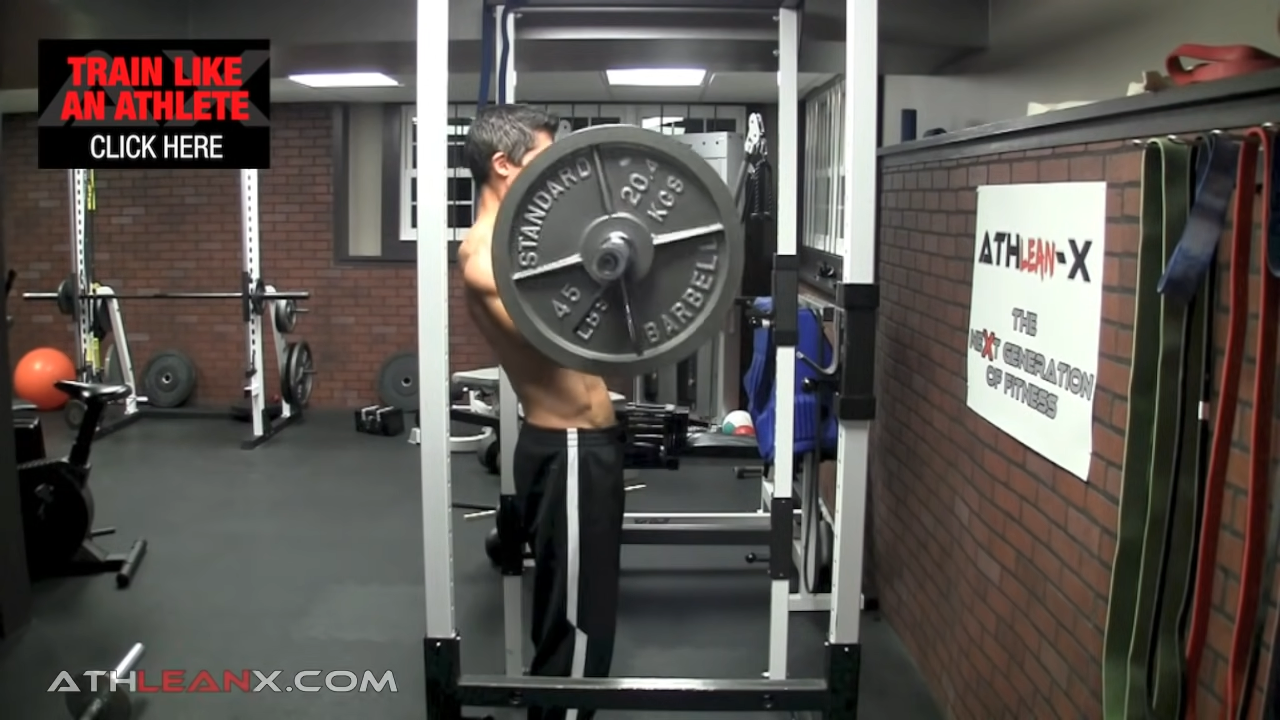
HOW TO DO BARBELL CURLS:
- For these biceps curls, start with feet hip-width apart, holding a barbell with an underhand grip (palms facing upwards) with hands about shoulder width or slightly wider. Ensure your elbows are against your torso and remain stationary throughout the movement.
- From this starting position, while keeping your upper arms still, exhale and curl the barbell upwards by contracting your biceps.
- Continue the curl until the barbell is at shoulder level, achieving maximum contraction of the biceps at the top of the movement.
- After holding the contraction briefly, inhale and slowly lower the barbell back to the starting position in a controlled manner, fully extending the arms and stretching the biceps.
- You can also use a cable machine for this challenging exercise by using the barbell cable attachment. If all you have is a pair of dumbbells, you can place them together to perform Dumbbells Curls with the same proper form.
WHAT MAKES IT EFFECTIVE: Isolation exercises like the Barbell Curl are especially effective for bicep development because they engage both main parts of the biceps, ensuring balanced growth. The ability to add weight to the barbell during this biceps isolation exercise allows users to continually challenge their muscles, promoting increased strength and size.
ECCENTRIC-FOCUSED CURLS WITH A WEIGHT VEST

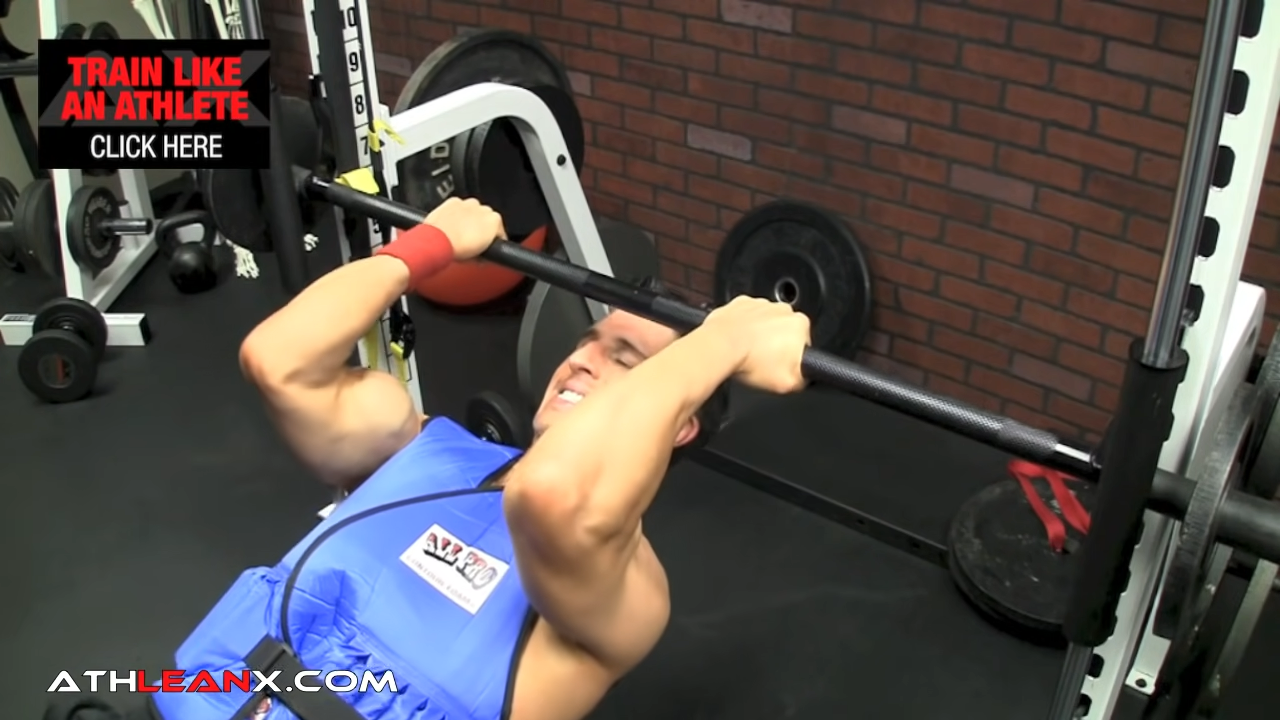
HOW TO DO ECCENTRIC FOCUSED CURLS WITH A WEIGHTED VEST:
- With your feet flat on the floor, position yourself beneath a Smith machine, wearing a weighted vest for additional weight.
- Reach out with both hands, moving your underhand grip at or slightly outside of shoulder width – depending on your frame. Extend your feet out, feet about hip width apart and tighten your core.
- Now, instead of pulling yourself up using your back muscles – like you would during a Lying Pull-Up – focus on the curling movement in your arms, engaging the biceps to pull yourself up.
- Pause at the top to contract the biceps and slowly lower yourself to the starting position where you’ll feel an intense stretch.
- Maintain core stability throughout the these biceps curls.
WHAT MAKES IT EFFECTIVE: You can think of this as similar to an Incline Dumbbell Curl. Alternative biceps exercises like this are effective because they force the muscle to contract and move through a full range of motion in order to get through the movement.
BARBELL CURL THROWS


HOW TO DO BARBELL CURL THROWS:
- Use the same form as for a Barbell Curl, but at the top of the movement toss the weight up.
- Catch the bar and slowly bring it back down to the starting position with control.
WHAT MAKES IT EFFECTIVE: This is an explosive movement that targets both heads of the biceps muscle. It’s great for muscle mass, strength, and raw power output.
Back and biceps are a classic muscle pairing combination because they complement each other.
That doesn’t mean you need to design your workout as a Bro Split.
Rather, you should be asking, “Which muscle groups work best together for my goals?”
If you don’t have a full workout, we’re here to help with that! Whether you’re looking for beginner workouts or advanced workouts, check out our Program Selector to help you find the best program for your needs and training experience. Advanced lifters will a long list of training programs to meet their goals.

- Training your back and biceps muscles together makes complete sense from a synergistic point of view – In other words, these muscles help one another to function.
- You should train muscles together that complement one another, but that doesn’t mean you need to follow a Bro Split.
- Here are my exercise choices for a great back and biceps routine:
- Single-Arm Dumbbell Row: While hinged at a flat bench with one hand resting on it, hold a dumbbell in the opposite hand and row it upwards, maintaining a back neutral position.
- Weighted Pull-Ups: Depending on your ability, add heavy weight or lighter weights. Grip a pull-up bar beyond shoulder-width, activate your core, and pull up until your chin surpasses the bar, maintaining posture.
- Bent-Over Barbell Row: Holding a barbell with feet shoulder-width apart, hinge forward with a straight back and row the barbell towards your lower rib cage.
- Weighted Single-Arm Rows with Extension: Beneath a Smith machine, grab the bar with one arm and pull up, switching arms after each rep.
- Barbell Curls: With feet hip-width apart, hold a barbell with palms up, and curl it while keeping your elbows stationary.
- Eccentric-Focused Curls with a Weight Vest: Under a Smith machine, grip the bar and pull up using biceps, then lower slowly.
- Barbell Curl Throws: Perform a Barbell Curl and toss the weight at the top, then catch and lower with control.
BACK AND BICEPS WORKOUT FAQS
Yes, it is common to pair back and bicep exercises together in a workout because they work together synergistically. Many back exercises, like Dumbbell Rows or Pull-Ups, also engage the biceps. Therefore, by training them together using upper body movements, you can maximize the efficiency of your workout. Shoot for 5-7 exercises per workout. Be sure to allow a couple of rest days between sessions to allow for muscle recovery. Over a period of time of 1-3 months, you'll start to notice a difference in the strength and size of your upper body.
The number of sets and reps largely depends on your fitness goals (e.g., muscle mass vs. strength). In general, here are some recommendations for training volume:
- For Building Strength: an excellent rep range would 3-5 sets of 1-6 repetitions
- For Muscle Hypertrophy (Muscle Growth): 3-5 sets of 6-12 repetitions
- For Endurance: 2-3 sets of 12-20 repetitions
Remember, it's essential to adjust the load accordingly. For example, for strength, you'd typically use heavier weights than for endurance. Don’t forget about taking proper rest periods as well.
How often you should train back and biceps depends on your fitness goals and what you want to achieve. At the minimum, you should be training your back and bicep muscles once per week. Most people find that training a muscle group twice per week with progressive overload techniques allows for adequate recovery, especially if you're splitting up your muscle groups throughout the week.
In theory, you can hit biceps before back, but I’d ask what your goals are here. Why would you want to work a smaller muscle group before a larger muscle group? In most cases, I’d tell you to work on the larger muscle groups before moving to smaller ones. If you exhaust your biceps before doing your back exercises, you might not have enough strength left in your biceps to properly engage in compound back exercises like Single-Arm Lat Pulldowns on a lat pulldown machine or Cable Pulley Machine Pull-Ups.
This depends on how your workouts are broken down. More often than not, you’re going to want to pair the back with the biceps. However, it's also common to see biceps paired with triceps for an arms-focused day. Another option is to incorporate a full "pull" day which involves working out the back, biceps, and rear deltoids (posterior deltoids) together. This can be done as part of a PPL 3 or 6 day training split.
REFERENCES
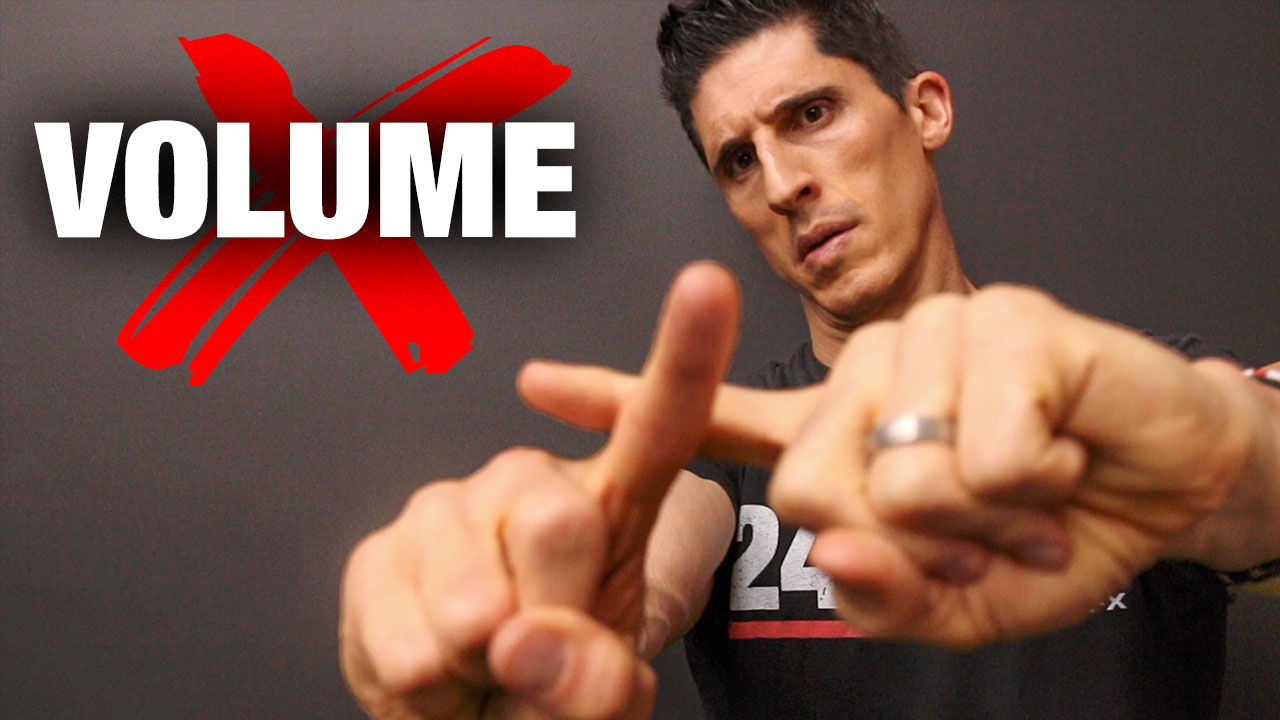
WHAT’S THE BEST WORKOUT FREQUENCY?
You want bigger biceps, powerful pecs, and tree-trunk legs. Your current workout isn’t getting you these things so what do you do?
Work out more, right? Wrong!
If there’s one decision that can singlehandedly halt your progress and send you backward on the road to your ideal physique, it’s this.
Guys, more workouts don’t necessarily mean more (and better) results.
What it could mean is burnout, fatigue, over-training, muscle loss, and injury. And no one wants that.
So, the question is, “How many times a week should I work out?”
Let’s take a look at your experience with fitness, individual goals, and the type of training you’re doing, because all these factors are important.
We’ll also dive into the essential role that the right amount of intensity has in these strength training sessions.
WHAT DETERMINES WORKOUT FREQUENCY?
Right now, you’re thinking, “Jeff, how many days per week should I work out?”
The short answer to that is, “It depends.”
The number of workouts per week of strength training will depend upon a few key factors including:
- Current fitness level
- Fitness goals
- Type of training split
Individual goals matter a lot! For example, a beginner with a fitness goal of muscle hypertrophy who is doing a push-pull-legs split will have a much different training program than someone who is experienced and training to be a powerlifter.
And then we have to consider the occasional “exception to the rule” such as your abs, since you can safely train those almost every day of the week.
Before we review each of those factors, I want to discuss the relationship between homeostasis, volume, and intensity – all factors that directly influence how many days you should work out.
FIGHTING HOMEOSTASIS
Most of us hate change, and we feel very comfortable in our own little routines.
Your body is the same way! It strives for what is called homeostasis, which is a big word that means no change.
It constantly seeks homeostasis, and it will adapt to your current environment and stimuli to make those the new norm.
When you’re trying to elicit a change, such as getting a muscle to grow, the body prefers just the right amount of stimulus to provoke what we see as an improvement. In this case, you notice more muscle.
In reality, your body is seeking an adaptation so that the next time it experiences this stimulus, it can better fend for itself and resist yet another change.
We are trying to force change on our bodies with every workout and our bodies are trying to keep things status quo.
Guess who wins most of the time?
To make things worse, a lot of people will see that they aren’t getting results – that the body has entered a plateau – and they will decide to work out more.
They’ll use the same intensity and volume, but the difference is that they’ll just do it longer or for more days.
And this is where you totally ruin your chances to see progress.
Thankfully, there’s a better way to restructure your workout schedule so you don’t have to spend hours upon hours, days upon days in the gym.
It all has to do with intensity and volume.
INTENSITY VS. VOLUME
Continuing with the example above, a lot of guys will not see the results they want and assume it has to do with the number of sets and reps they are doing.
In response, they will dramatically increase these acute variables to a point that is downright insane, such as 24 sets per muscle group!
I don’t care who you are, if you’re a natural lifter and you’re adding that kind of volume to your program, something is going to suffer.
The quality of the sets that you’re doing is going to go down over the course of that workout.
What might have been good in the first several sets is not going to look the same way when you get to set number 16. And certainly not when you get to set number 24.
Most importantly, there is no way that you can maintain a high level of intensity for each and every one of those sets. Not naturally anyway.
This is what I like to call “junk volume.”
And this perfectly illustrates the lie that most of you have been fed:
If you increase volume, you need to decrease intensity. And if you increase the intensity, you need to decrease the volume. It’s not that simple, guys.
Sure, volume is important, but what’s more important is high-quality intensity.
The irony is that research shows you really don’t need that many quality sets to create muscle protein synthesis.
As you probably already know, protein synthesis is the spark for muscle hypertrophy. You need somewhere between 4 to 10 sets of high-quality work per muscle group.
I can’t stress this enough: High quality has nothing to do with volume.
The quality is driven by the intensity of the exercise.
And the way to tap into good, old-fashioned intensity is to truly train to failure. And as I just mentioned, you don’t need a ton of sets and reps to do that.
HOW TO TRAIN TO FAILURE
Too many people have been told that in order to train properly, they better watch out for the intensity of their training.
They’re told if they train to failure, they’re going to interrupt the body’s ability to recover 48 hours later.
They’re told that they are going to create too much damage and too many problems.
So, what happens is they stick to a moderate-intensity exercise and hold back in the number of repetitions they perform as they approach failure.
In other words, they stay below failure. They feel like it’s getting too difficult, so they take an interval of rest before doing another lackluster set.
And guess what? That’s not true muscular failure.
What’s happening is the intensity is suffering so much.
These people are told that they’re doing the right thing by adding more and more volume. Unfortunately, their intensity is not adequate to create change.
That’s a problem.
WHAT IS MUSCULAR FAILURE?
Let’s talk about muscular failure, the moment when you’ve pushed your muscles to their absolute limit.
It’s the point where you’ve given it your all and your muscles just can’t take it anymore. You’re sweating, you’re breathing hard, and you’re feeling that sweet burn.
It’s that magical moment when you know you’ve given it everything you’ve got and left nothing on the table.
Are you really even training to true, momentary, concentric failure?
This means you truly cannot lift this thing for one more rep. You go all the way, as hard as you can until you can’t lift it anymore.
Is that actually happening, or are you stopping just because it’s getting difficult?
If I had to bet, I’d say a lot of you are stopping short. Most of you aren’t realizing your true potential. Instead, you’re stopping because the exercise is getting a little tough.
And here’s the thing: You don’t need heavy weight to reach muscular failure.
You need intensity. Results are not driven by volume if there’s no presence of intensity.
There’s an epidemic now of too much junk volume out there and I want to give you tips to make sure you’re not falling into this trap.
Training to complete muscular failure can be an effective way to stimulate muscle growth and improve strength.
Here are some tips for training to complete muscular failure:
WARM-UP PROPERLY
Before starting your workout, perform a dynamic warm-up to increase blood flow to your muscles and prepare your body for the upcoming stress.
Aerobic activity followed by light movements that mimic the exercises you’ll be doing can help prevent injury and improve overall performance.
Aim for about 10 minutes of warming up with light aerobic exercise and dynamic stretches.
USE A SPOTTER
When training to failure, it’s essential to have a spotter, especially when performing compound exercises like the bench press, squat, or shoulder press.
A spotter can assist you when you reach your limit and help prevent injury from losing control of the weights.
USE DROP SETS
Drop sets are a popular and effective training technique for pushing your muscles beyond their usual limits, promoting muscle growth and endurance.
This method involves performing a set of an exercise to failure or near failure, then immediately reducing the weight and continuing to perform additional reps until failure is reached again.
Drop sets are a good reason to have a spotter nearby as activity levels can be really intense.
LISTEN TO YOUR BODY
Training to failure requires you to have a strong mind-to-muscle connection especially during weight-bearing activities.
That means you need to feel what’s going on inside the muscle, so you know whether to increase the weight or pump out another five reps.
During vigorous activity like a drop set, listening to your body will help you know whether you’ve truly achieved failure.
HOW MANY TIMES A WEEK SHOULD I WORK OUT?
With all that said, now that you know how to work out, it’s time for a solid number of days of strength training.
The catch is that I’m going to break this down based on two key factors: experience with fitness and type of training.
These training recommendations will also focus on strength training exercises and how many days you should find yourself in the weight room or in your home gym.
FITNESS LEVEL
Here’s how many workout days you should consider based on your fitness experience level and your exercise history.
BEGINNER
If you’re new to working out or just getting back into an exercise program, it’s best to start with three days of exercise per week.
This allows your body to acclimate to the new physical demands and reduces the risk of injury.
I’d recommend focusing on a mix of strength training with cardio.
This mixture of weight training with moderate-intensity cardio activity is going to do a lot for basic health and fitness.
More specifically, as a beginner, you get to reap all the benefits simultaneously including lean muscle building and weight loss.
Perform full-body workouts three days per week with one day or two days of cardio per week. This will help you build a solid fitness foundation.
INTERMEDIATE
As an intermediate fitness enthusiast with some experience under your belt, you can aim for three-to-four days per week.
This allows for a balance between training and recovery, while still providing enough stimulus for progress.
You may choose to continue with full-body workouts or transition to a split routine, depending on your goals and preferences.
Again, save a day or two for cardiovascular exercise, but only if it makes sense for you. You can opt for moderate-intensity physical activity, which will require more minutes of exercise.
Or you can go for something that has more intensity and takes less time like high-intensity interval training.
ADVANCED
For advanced fitness pros who have been training consistently for an extended period, five or six exercise days per week can be beneficial.
At this stage, you may need a higher training frequency – along with increasing workout intensity – to continue seeing progress.
Your plans will probably incorporate a mixture of heavy weights with moderate weights along with varying workout length. This will depend on how hard you’re working that day.
This is especially true if you’re following a split routine, which targets specific muscle groups each day.
Again, your intensity is high throughout each and every workout, regardless of the total time.
Remember, though, that adequate recovery and rest days are still crucial to avoid overtraining and injury.
TYPE OF TRAINING
Here’s how many days per week you should consider exercising based on the type of training you’re doing.
PUSH-PULL-LEGS (PPL)
We kick off our list with one of the most popular muscle splits: Push Pull Legs or PPL.
For a Push-Pull-Legs routine, you can aim for three or six days per week. Here’s how:
You can do each workout once per week (three days total) or twice per week (six days total) depending on your level of fitness, recovery abilities, and goals.
Naturally, if you’re a beginner, I’d say to stick with three days per week for this exercise routine. You can throw in some moderate-intensity aerobic exercise in between the days for strength training.
If you’re a more advanced trainee, you can try out the six-day training schedule.
If you’re doing the six-day schedule, most people will have a rotating day off that falls between the two PPL blocks.
For example, if you finish the first block with a legs workout on Wednesday, you would take Thursday off then perform the push workout on Friday. Your next day off would be Monday.
TOTAL BODY
With a total body workout (or full-body workout), the focus is on compound movements with cardiovascular exercise sprinkled in between.
The type of exercise you tend to do will involve squats, bench presses, deadlifts, overhead presses, and other compound movements. In other words, you’re looking at intense full-body workouts for each of your strength training days.
For total body workouts, it’s generally recommended to work out three to four days per week.
This allows for adequate recovery and days of rest between sessions while still providing enough stimulus for progress.
Again, beginners should stick with three days per week while those with experience can throw in one more day.
Beginners will see the most results from this type of program because they’ve never done weight training for lean muscle mass before. What’s more, they are hitting every major muscle group three times per week.
Don’t forget to include some moderate-intensity aerobic physical activity in between those strength training days.
The muscle gains are going to surprise you if the most physical activity you’ve ever done involved just your body weight.
With that said, keep in mind that muscle will not keep growing over time unless you make a plan to keep challenging yourself.
You need to keep cycling through periods of time where the acute variables – sets, reps, etc. – are new and challenging.
Muscle growth happens because the intensity is paired with the ideal weekly workout plan.
UPPER/LOWER
As the name suggests, this type of split separates the upper body and lower body into their own strength sessions.
For an upper/lower split, you can go between four and six workout days per week, alternating between upper and lower body workouts.
For example, one of your days of training for the upper body might look like this:
- Chest Presses
- Lat Pulldown
- Chest Flies
- Landmine Rows
- Leg Raises
- Cable Crunch
This ensures each muscle group gets trained for two sessions per week while allowing for recovery days.
It also ensures you can squeeze in some cardio exercise.
Cardio activity could include interval training such as high-intensity interval training, which is an effective workout that also saves time.
Beginners should first complete a total body or PPL workout routine for at least two months before moving to an upper/lower split.
If you have a lot of experience under your belt, you can try alternating these strength workouts six days per week, giving yourself one glorious rest day.
SPLIT MUSCLE GROUP – ANTAGONISTIC
An antagonistic split muscle group routine means that you’re working out muscle groups that are in direct opposition to each other.
For example, the following muscle groups are antagonistic:
- Chest and back
- Quads and hams
- Biceps/triceps
A series of exercises might include a Barbell Bench Press followed by a Bent Over Row.
When following an antagonistic split muscle group routine, you can work out four-to-six days per week, assigning one muscle pairing per day.
Again, I’d recommend that beginners hold off doing this type of workout until they’ve done a total body or full-body workout with a balance of cardio exercise for a couple of months.
SPLIT MUSCLE GROUP – SYNERGISTIC
On the opposite side of the spectrum, the synergistic muscle pairings include muscles that work together such as chest and triceps, back and biceps, and hams and glutes.
For a synergistic split muscle group routine, aim for four-to-five days per week.
SINGLE MUSCLE GROUP
You might wonder if I suggest a Bro Split, and my answer is, “Depends on the Bro Split.”
Guys, there is a way to do a Bro Split correctly.
However, unless you’re a bodybuilder, I might initially steer you away from the Bro Split, especially if you’re a beginner.
With that said, if you’re doing a Bro Split like I discuss in my article on the best workout split, then I’d say you can work out between five and six sessions per week.
ROLE OF NUTRITION
There’s no way I can talk about how many times a week to work out without mentioning nutrition. After all, without good nutrition, your strength workouts won’t produce any results.
The deal is, we can all trick ourselves into getting to the gym for an hour a few times a week.
But the real work happens during the other 23 hours when you’re supposed to be following a solid nutrition plan and sleeping between seven to nine hours.
In other words, training is easy compared to nutrition and sleep.
The responsibility is so much greater and that’s why so many people struggle with nutrition.
It is essential to understand that nutrition plays a pivotal role in achieving your fitness goals. Proper nutrition can help support muscle growth, maintain a healthy weight, and fuel your body with the energy it needs to perform at its best.
Below are some fundamental guidelines to keep in mind as you plan your workout program.
NUTRIENT BALANCE
Incorporating a balanced diet consisting of carbohydrates, proteins, and fats is crucial.
Carbohydrates provide the energy needed for your workouts, while proteins aid in muscle repair and growth.
Fats, on the other hand, are essential for hormone production and overall health.
TIMING OF MEALS
Eating at the right times can make a significant difference in your progress.
Consuming a meal or snack containing both protein and carbohydrates within 30-to-60 minutes after your workout can help with recovery and muscle growth.
Unless you’re following a specific fasting or meal timing schedule, try to eat a well-balanced meal every three to four hours.
HYDRATION
Proper hydration is vital for optimal performance in the gym and overall health.
Drinking enough water throughout the day isn’t enough though. You also need electrolytes.
This can help to regulate body temperature, maintain proper digestion, and prevent fatigue during your workouts.
MEAL PLANNING AND PREPARATION
Taking the time to plan and prepare meals in advance can make it easier to stick to a healthy diet. This can also save you time and money.
CHOOSE WHOLE, UNPROCESSED FOODS
Prioritize consuming fresh fruits, vegetables, whole grains, lean proteins, and healthy fats over processed and sugary foods.
PORTION CONTROL
Be mindful of your portion sizes, as eating too much of even healthy food can lead to weight gain and hinder your progress.
ACCOUNTABILITY
Enlist the support of friends, family, or a professional nutritionist to help keep you accountable and motivated.
“How many times per week should I work out?” It’s an important and, admittedly, annoying question.
It’s all going to depend on your fitness level and type of training, but assuming you’re getting at it and revving up that intensity, here’s a quick wrap-up:
Beginners should focus on three days per week, intermediate lifters can lift between three to five days per week, and advanced lifters can go for four to six days each week.
Don’t have an exercise plan to follow or maybe you’re looking to change up your current one? We can help! Check out our ATHLEAN-X training plans to see which one is the best fit for your goals and fitness level, regardless of where you are in your fitness journey. Let me be your personal trainer and strength coach and you’ll be amazed at your results.

- How many days you should work out will depend upon a few key factors including fitness experience, fitness goals, and types of exercise or training split.
- First, you want to make sure you understand that the focus during your training should be on the intensity – not the volume.
- You don’t need much volume to trigger protein synthesis, but you do need high-quality intensity. Training to muscular failure ensures you’re able to achieve this intensity.
- As far as how many times a week you should work out, you should consider your fitness level. Are you a beginner? Three days per week will be good for you. Intermediate and advanced lifters can opt for longer training weeks at three to five and four to six, respectively. More training days does not mean you should skip on the intensity.
- Next, consider what type of training you are doing. Thankfully, you’ll realize that the type of training that’s right for you usually coincides with experience with fitness.
- For example, a beginner should start with the total body workout, which should be performed three days per week.
- Other workouts like the Push-Pull-Legs (PPL) and split muscle group workouts can be done between three and six times per week.
- Don’t forget to support these intense workouts with good nutrition and plenty of sleep.
HOW MANY TIMES A WEEK SHOULD I WORKOUT FAQS
This depends on your fitness level and type of training. If you are a beginner, I’d recommend exercising three days per week.
If you have some experience, try lifting between three and five days each week. If you’re an advanced lifter, go for four to six days a week.
For general fitness, aim for at least 150 minutes of moderate-intensity aerobic exercise or 75 minutes of vigorous-intensity aerobic exercise spread out over three to five days per week.
Additionally, perform strength training exercises targeting all major muscle groups at least two days per week.
Adjust your workout frequency based on your specific fitness goals and listen to your body to avoid injury or burnout.
REFERENCES

Over the past few months I’ve shared with you some crazy workout “finishers”.
BUT THIS ONE… May be the most insane of them all! Biceps Workout “Finisher” (HARDEST 10 REPS EVER)
Just 10 stinking measly reps stand between you and the end of your biceps workout. Ummm… Did I mention this was insane?!?
Can you complete these 10 reps (find out here)
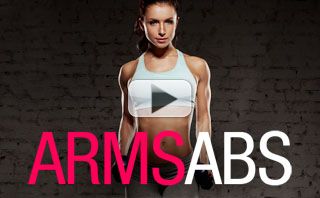
Hey Ladies!
Short on time this week?
You can fit in two workouts in one… With this combo ARMS & CORE routine! SEXY ARMS & STRONG CORE!!
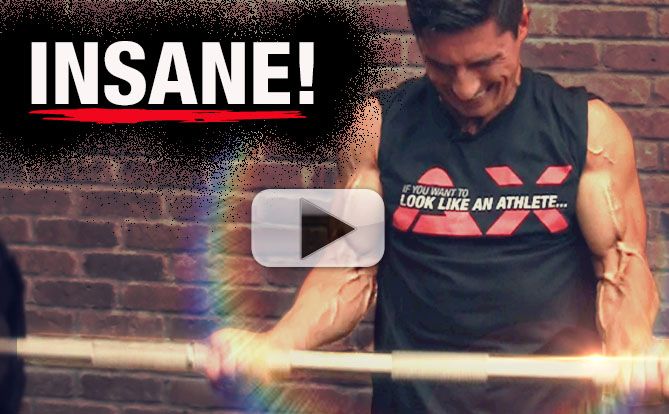
As you know… This week has been all about the arms! With the release of Ultimate Arms 2 days ago, I was actually just getting started… With this brand new YouTube video I’m giving you one of my crazy bicep workouts for free!
Warning: The technique I show you here will give you the craziest pump ever! As you’ll see… It crushes me in just minutes.
Free Biceps Workout (Ultimate Arms Sneak Peek)



